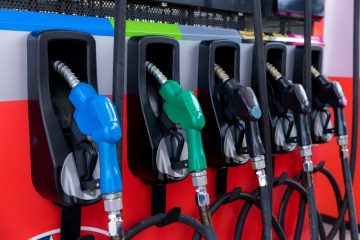China’s re-opening and the J-curve in oil consumption

China’s exit from a coronavirus suppression strategy relying on lockdowns will eventually boost oil consumption by more than 1 million barrels per day (bpd) as domestic and international travel rebounds. But first the country will have to endure a massive exit wave of infection disrupting economic activity and travel, depressing oil consumption in the short term. Exit from lockdowns is likely to have a J-curve effect, lower oil consumption and prices in the first quarter of 2023 but increasing both later in the year.
Since the first quarter of 2020, strict lockdowns and quarantines have had a massive negative impact on passenger travel inside China as well as with destinations outside the country. The number of passengers carried on all modes of transport in the first 10 months of 2022 was down by 67% compared with the same period in 2019. There were massive reductions in passengers carried by road (-82%), air (-63%) and rail (-52%) compared with before the pandemic. There were similar reductions in transport demand when measured by total distance travelled (passenger-kilometres).
As restrictions on movement are eased, however, travel demand will eventually rebound as much of this business and leisure travel resumes.
SUPPRESSED OIL DEMAND
China’s refineries processed roughly 13.4 million barrels per day (b/d) of crude in the first 10 months of 2022, according to data from the National Bureau of Statistics (NBS). But crude processing was down by almost -1.8 million b/d compared with a projection of the pre-pandemic five-year trend for 2015-2019. This is a rough measure of consumption lost to the epidemic and lockdowns, some of which will be restored as the economy restarts.
Passenger aviation is by far the most fuel-intensive mode of transport, so the resumption of flying is set to have a particularly big impact. China’s refineries produced around 0.6 million b/d of jet fuel and other kerosene in the first ten months of 2022 down from 1.1 million b/d in 2019. Resumed flying could increase fuel consumption by 0.5 million b/d, or even 0.6 million b/d if aviation reverts to its pre-pandemic trend. Resumed intra-urban and long-distance highway and rail travel would also boost oil consumption, as would a recovery in the depressed manufacturing and construction sectors.
China’s total consumption is set to rise by 1.0 million b/d or more by the end of 2023 as travel restrictions unwind and manufacturing recovers.
ENDURING THE EXIT WAVE
First, though, China is likely to suffer a massive exit wave of infections, which will curtail travel and other business activity, as households minimise social contacts and possible virus exposures voluntarily. If the exit wave is entirely uncontrolled, it is likely to pass through the population quickly in 2-4 months, overwhelming health services and severely disrupting activity and fuel consumption in January and February.
If the government opts to retain some controls to slow the wave and moderate the peak, the wave could spread over 3-6 months, with less disruption but prolonging it into April or May. The recent slump in oil prices and switch from backwardation to contango in futures markets is consistent with a J-curve of weak consumption during an exit wave followed by a strong rebound later in 2023.
ANOTHER INFLATION SHOCK
Global petroleum inventories are already low and there is not enough spare crude production capacity to satisfy an extra 1 million b/d or more of consumption from China by the end of 2023. Crude supply remains constrained by OPEC+ output limits, sanctions following Russia’s invasion of Ukraine and the lack of growth in U.S. shale.
China’s lockdowns and manufacturing slowdown have taken some pressure off global supply chains for oil and other commodities in the second half of 2022. But once the exit wave has passed through, China’s resumed growth will renew the pressure on oil and other supply chains. Unless there is a global recession, China’s re-opening is likely to cause oil and other energy markets to tighten and renew upward pressure on prices later in 2023. China’s re-opening could ensure global inflation persists – just when central banks in North America and Europe are hoping it will come back under control. Re-opening will therefore require central banks to keep interest rates higher for longer to ensure there is enough slack in supply chains to accommodate the extra demand from China.







